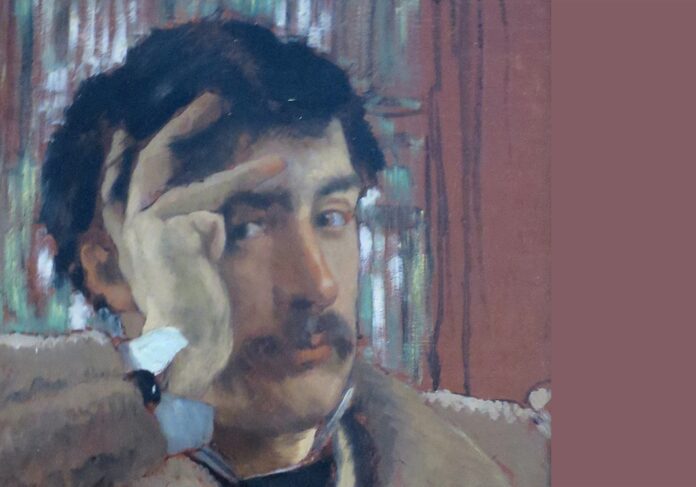Jacques-Joseph Tissot (1836-1902), who will be called James, is a truly curious case in the French art world of the second half of the twentieth century. He was not an academic, neither was he part of the most innovative currents. This definition has been negative for his postmortem reassessment.
He was born in Nantes, son of a textile merchant and milliner, both very devoted. He made his studies at the Jesuits, first in Flanders, then in Vannes, he revealed a gift for drawing early enough.
He moved to Paris in 1856 and began his studies at the Academy of Fine Arts. He became friends with Edgard Degas and the American James Abbot McNeil Whistler, both ready to conceive another way of making painting.
In 1857 he traveled to Belgium, where he met Henri Levy, a painter who had a great influence on him.Then hemoved to Germany and Switzerland.
His first exhibition was at the Salon of 1859: three portraits of women and three medieval scenes taken from Goethe’s Faust. His paintings revealed originality in treating the models with a remarkable finesse of expression, but also with a real ability to play happily with the shapes and colors of the elegant clothes of the time. In the Salon of 1859 he presented five works, two of a religious nature.
He is among the first artists to be influenced by Japanese art. But not in the manner of Vincent Van Gogh. In 1962 his Japanese in the bathroom created a sensation. The same year, he went to London for the first time, and there, in 1964 he exhibited at the annual exhibition of the Royal Academy. Shortly thereafter he began to make caricatures for Vanity Fair magazine under the pseudonym of Coïdé.
He was present with two canvases at the Universal Exhibition in Paris.
When the war between France and Prussia broke out in 1870, he fought for the defense of Paris. After the defeat, he left the capital and settled in London, where he had no difficulty finding collectors.
His relations with the world of Impressionism were still very close, despite the clear stylistic difference. He received Berthe Morisot at home in 1874 and, the same year, he went to Venice with Edouard Manet.
A year later, he decided to live with a divorced young Irish woman, Kathleen Kekky, who will often model for him. In 1880 he was one of the founders of the Royal Society of Painter-Etchers and continues to be present in France.
When he returned to Paris, his reputation was unchanged. In 1883 he exhibited his portraits at the Palais de l’Industrie. In 1985 the Galerie Sedelmeyer offered him to present a selection of works: Quinze tableaux sur la femme à Paris. Three years later, he painted the church of Saint-Sulpice, causing his return to religion. From 1886 he began to illustrate the Bible. Furthermore, he travelled to the East several times until 1896.
Until his death in 1902, he would never lack the favor of the public. This beautiful Parisian retrospective at the Musée d’Orsay (until mid-September) and its catalog that are of a highly studied expressive quality. A beautiful world that will vanish with war, just in the way described by Marcel Proust in A la recherche du temps perdu. A subject he is interested in, as his painting Le Cercle de la rue Royale suggests.








